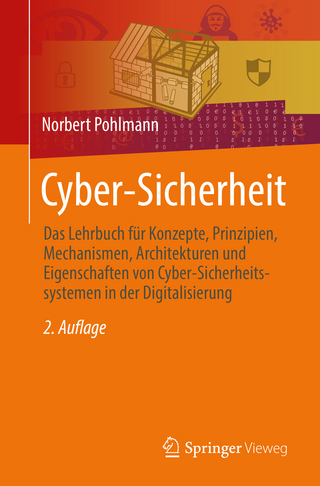
Digital Forensics Basics
Apress (Verlag)
978-1-4842-3837-0 (ISBN)
Directed toward users with no experience in the digital forensics field, this book provides guidelines and best practices when conducting investigations as well as teaching you how to use a variety of tools to investigate computer crime. You will be prepared to handle problems such as law violations, industrial espionage, and use of company resources for private use.
Digital Forensics Basics is written as a series of tutorials with each task demonstrating how to use a specific computer forensics tool or technique. Practical information is provided and users can read a task and then implement it directly on their devices. Some theoretical information is presented to define terms used in each technique and for users with varying IT skills.
What You’ll Learn
Assemble computer forensics lab requirements, including workstations, tools, and more
Document the digital crime scene, including preparing a sample chain of custody form
Differentiate between law enforcement agency and corporate investigations
Gather intelligence using OSINT sources
Acquire and analyze digital evidence
Conduct in-depth forensic analysis of Windows operating systems covering Windows 10–specific feature forensics
Utilize anti-forensic techniques, including steganography, data destruction techniques, encryption, and anonymity techniques
Who This Book Is For
Police and other law enforcement personnel, judges(with no technical background), corporate and nonprofit management, IT specialists and computer security professionals, incident response team members, IT military and intelligence services officers, system administrators, e-business security professionals, and banking and insurance professionals
Nihad A. Hassan is an independent information security consultant, digital forensics and cybersecurity expert, online blogger, and book author. He has been actively conducting research on different areas of information security for more than a decade and has developed numerous cybersecurity education courses and technical guides. He has completed several technical security consulting engagements involving security architectures, penetration testing, computer crime investigation, and cyber open source intelligence (OSINT). Nihad has authored five books and scores of information security articles for various global publications. He also enjoys being involved in security training, education, and motivation. His current work focuses on digital forensics, anti-forensics techniques, digital privacy, and cyber OSINT. He covers different information security topics and related matters on his security blog (DarknessGate) and recently launched a dedicated site for open source intelligence resources at (OSINT.link). Nihad has a bachelor of science honors degree in computer science from the University of Greenwich in the United Kingdom. He can be followed on Twitter (@DarknessGate), and you can connect to him via LinkedIn (DarkenessGate).
Chapter 1: Introduction: Understanding Digital Forensics.- Chapter 2: Essential Technical Concepts.- Chapter 3: Computer Forensics Lab Requirements.- Chapter 4: Initial Response and First Responder Tasks.- Chapter 5: Acquiring Digital Evidence.- Chapter 6: Analyzing Digital Evidence.- Chapter 7: Windows Forensics Analysis.- Chapter 8: Web Browser and Email Forensics .- Chapter 9: Antiforensics Techniques.- Chapter 10: Open Source Intelligence (OSINT).- Chapter 11: Digital Forensics Report.
| Erscheinungsdatum | 17.03.2019 |
|---|---|
| Zusatzinfo | 155 Illustrations, black and white; XXII, 335 p. 155 illus. |
| Verlagsort | Berkley |
| Sprache | englisch |
| Maße | 178 x 254 mm |
| Themenwelt | Informatik ► Netzwerke ► Sicherheit / Firewall |
| ISBN-10 | 1-4842-3837-0 / 1484238370 |
| ISBN-13 | 978-1-4842-3837-0 / 9781484238370 |
| Zustand | Neuware |
| Informationen gemäß Produktsicherheitsverordnung (GPSR) | |
| Haben Sie eine Frage zum Produkt? |
aus dem Bereich


